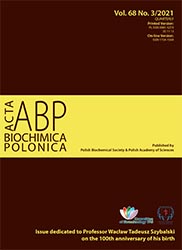Cloning, expression in Komagataella phaffii, and biochemical characterization of recombinant sequence variants of Pseudomonas sp. S9 GDSL-esterase
Abstract
Two recombinant Komagataella phaffii (formerly Pichia pastoris) yeast strains for production of two sequential variants of EstS9 esterase from psychrotolerant bacterium Pseudomonas sp. S9, i.e. αEstS9N (a two-domain enzyme consisting of a catalytic domain and an autotransporter domain) and αEstS9Δ (a single-domain esterase) were constructed. However, only one of recombinant K. phaffii strains, namely Komagataella phaffii X-33/pPICZαestS9Δ, allowed to successfully produce and secrete recombinant αEstS9Δ enzyme outside of the host cell. The purified αEstS9Δ esterase was active towards short-chain p-nitrophenyl esters (C2–C8), with optimal activity for the acetate (C2) ester. The single-domain αEstS9Δ esterase exhibits the highest activity at 60oC and pH 9.5. In addition, the enzyme retains 90% of its activity after 3 hour incubation at 70–90oC. What should be also noted is that αEstS9Δ esterase produced in the K. phaffii expression system has a much higher specific activity (0.069 U/mg of protein) than the recombinant EstS9Δ esterase produced in an E. coli expression system (0.0025 U/mg of protein) (Wicka et al., 2016, Acta Biochim Pol 63: 117–125. https://doi.org/10.18388/abp.2015_1074).
Acta Biochimica Polonica is an OpenAccess quarterly and publishes four issues a year. All contents are distributed under the Creative Commons Attribution-ShareAlike 4.0 International (CC BY 4.0) license. Everybody may use the content following terms: Attribution — You must give appropriate credit, provide a link to the license, and indicate if changes were made. You may do so in any reasonable manner, but not in any way that suggests the licensor endorses you or your use.
Copyright for all published papers © stays with the authors.
Copyright for the journal: © Polish Biochemical Society.


